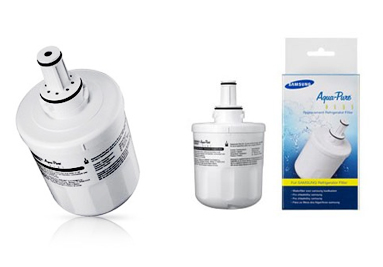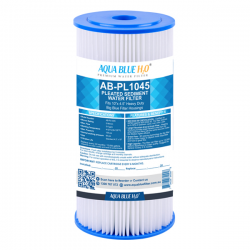Phone: 1300 767072 - 0406739544 - 02 96957740 | Email: sales@aquapureplus.com.au | Address: 17-18/61-71 BEAUCHAMP ROAD MATRAVILLE 2036 NSW AUSTRALIA
Welcome Sign in
No products
Under-sink water filtration system Paragon Water Filter CP-4
New product
Under-sink water filtration system Paragon Water Filter CP-4
NSF/ANSI 42, NSF/ANSI 53, NSF/ANSI P473, NSF/ANSI 401, NSF/ANSI 372
- Remove this product from my favorite's list.
- Add this product to my list of favorites.

More info
https://www.health.nsw.gov.au/environment/factsheets/Pages/pfos.aspx
PFOS and PFOA are man-made chemicals belonging to the group known as Per- and poly-fluoroalkyl substances.
PFOS, PFOA and related chemicals (Per- and poly-fluoroalkyl substances) have been used, and remain in the environment around several sites in NSW.
What are per- and poly-fluoroalkyl substances?
Per- and poly-fluoroalkyl substances, also known as “PFASs”, are a group of man-made chemicals (previously known as PFCs) that have been used in a range of common household products and specialty applications, including in the manufacture of non-stick cookware; fabric, furniture and carpet stain protection applications; food packaging; some industrial processes; and in some types of fire-fighting foam.
Perfluorooctane sulfonate (PFOS), perfluorooctanoic acid (PFOA) and perfluorohexane sulfonate (PFHxS) belong to this group of chemicals. These chemicals are very stable and do not break down in the environment. They can persist for a long time both in the environment and in humans.
Are there any sites in NSW contaminated with PFASs?
NSW Environment Protection Authority (EPA) has established a PFAS investigation program and is prioritising sites around NSW where PFASs were used in significant quantities. The investigation is focussing on airports, fire fighting training facilities and some industrial sites, particularly those sites where it is determined that there are exposure pathways to these chemicals through bore water usage, surface water usage or fishing. Further information is available on the PFAS investigation program.
Following assessment by the Department of Defence, the Williamtown site was found to contain high concentrations of PFOS and other closely related chemicals. These chemicals are present on the site and over the past decades have worked their way through the soil to the groundwater underneath the site. These substances have not only contaminated the RAAF site itself, but also land close to the site. Further information on this contamination is available in Williamtown RAAF Base contamination - FAQs.
How are people exposed to PFASs?
Because these chemicals have been used for decades, PFASs are found widely in the land and water environments around the world. People are exposed to small amounts of PFOS or PFOA in everyday life through exposure to dust, indoor and outdoor air, food, water and contact with consumer products that contain these chemicals. Food is thought to be the most important source of exposure. Treated carpets and floors treated with waxes and sealants that contain PFASs can be an important source of exposure for babies and infants.
How do PFASs affect human health?
There is currently no consistent evidence that exposure to PFOS and PFOA causes adverse human health effects. However, based on the evidence from animal studies potential adverse health effects cannot be excluded.
The existing limited studies on PFHxS suggest that this chemical can cause effects in laboratory test animals similar to the effects caused by PFOS. However, based on available studies, PFHxS appears to be less potent in animal studies than PFOS.
Much of the research on humans has been done with people who were exposed to relatively high levels of PFASs through their work. Workers involved in the manufacture or use of PFASs usually have higher blood PFAS levels than the general public. Studies on PFAS workers have looked for effects on cholesterol levels, male hormones, heart disease, liver changes and other effects, including cancer. These studies have not consistently shown that PFAS exposure is linked to health problems.
Does exposure to PFASs cause cancer?
In humans, there is no conclusive evidence that PFASs cause any specific illnesses, including cancer.
Studies in laboratory animals suggest that PFOS and PFOA may promote some cancers in those animals, but it is not clear if these results have any implications for human health.
No existing studies have found a causal link between exposures to PFOS and PFOA and cancer in humans. Occupational studies of workers involved in the manufacture or use of PFOS and PFOA have looked at whether PFOS and PFOA are linked with prostate, bladder, and liver cancer, with no consistent findings. However, additional health studies are ongoing to assess whether evidence for a causal link between PFASs exposure and cancer may exist. Hence the International Agency for Cancer Research (IARC) has classified PFOA as possible carcinogen (Class 2B), but PFOS has not been classified as yet.
Are there any health risks to pregnant women from exposure to PFASs?
There is currently no consistent evidence that exposure to PFOS or PFOA causes adverse human health outcomes in pregnant women or their babies.
Nonetheless, pregnant women should be considered a potentially sensitive population when investigating PFOS and PFOA contaminated sites, with a view to minimising their exposure to PFOS and PFOA.
Should I continue to breastfeed if I have been exposed to PFASs?
There are significant health benefits from breast feeding and these benefits far outweigh any potential health risks to an infant from any PFOS or PFOA transferred through breast milk.
Hence, it is not recommend that mothers living in or around sites contaminated with PFOS or PFOA cease breast feeding.
Does Australia have health reference values for PFASs to undertake health risk assessments?
The Commonwealth Department of Health has established ‘health based guidance values’ in the form of a Tolerable Daily Intake (TDI) for PFOS/PFHxS and PFOA. These values are based on a review of the scientific evidence by Food Standards Australia and New Zealand (FSANZ).
These values (listed below) are recommended by the Commonwealth Department of Health for assessing site contamination in Australia.
| Toxicity reference value | PFOS/PFHxS | PFOA |
|---|---|---|
| Tolerable Daily Intake (μg/kg/d) | 0.02 | 0.16 |
| Drinking Water Quality Guideline (μg/L) | 0.07 | 0.56 |
| Recreational Water Quality Guideline (μg/L) | 0.7 | 5.6 |
What can I do to minimise my exposure to PFASs?
If you live in a PFAS affected area
- Do not use groundwater, bore water or surface water for drinking or cooking.
- Avoid swallowing groundwater or surface water when bathing, showering, swimming and paddling.
- It is safe to drink water from the reticulated supply (town water).
- Avoid eating home grown food produced using contaminated water, including home slaughtered meat, eggs, milk, poultry, fruit and vegetables.
- Moderate intake of, and seek further advice, regarding home produce that was grown within the area but was not produced with contaminated water.
- People who personally source and eat fish and seafood from a body of water where the water is contaminated, such as fishers and local residents, should moderate the number of servings of individual species.
Are blood tests recommended to determine health effects from exposure to PFASs?
Blood testing has no current value in informing clinical management.
Hence, blood tests are not recommended to determine whether any medical condition is attributable to exposure to PFOS or PFOA and have no current value in informing clinical management, including diagnosis, treatment or prognosis in terms of increased risk of particular conditions over time.
The value of blood testing is limited to assessing exposure at a population level, such as monitoring over time, which may help determine the success of exposure reduction measures. However, given the long biological half-life of PFASs, frequent blood monitoring is of no value.
If you think you have been exposed to PFOS or PFOA and you have any health concerns, please consult your general practitioner.
Under-sink water filtration system Paragon Water Filter CP-4

The WaterMark Certification Scheme (Scheme) is a mandatory certification scheme for plumbing and drainage products to ensure they are fit for purpose and appropriately authorised for use in plumbing and drainage installations.



FEATURES & BENEFITS
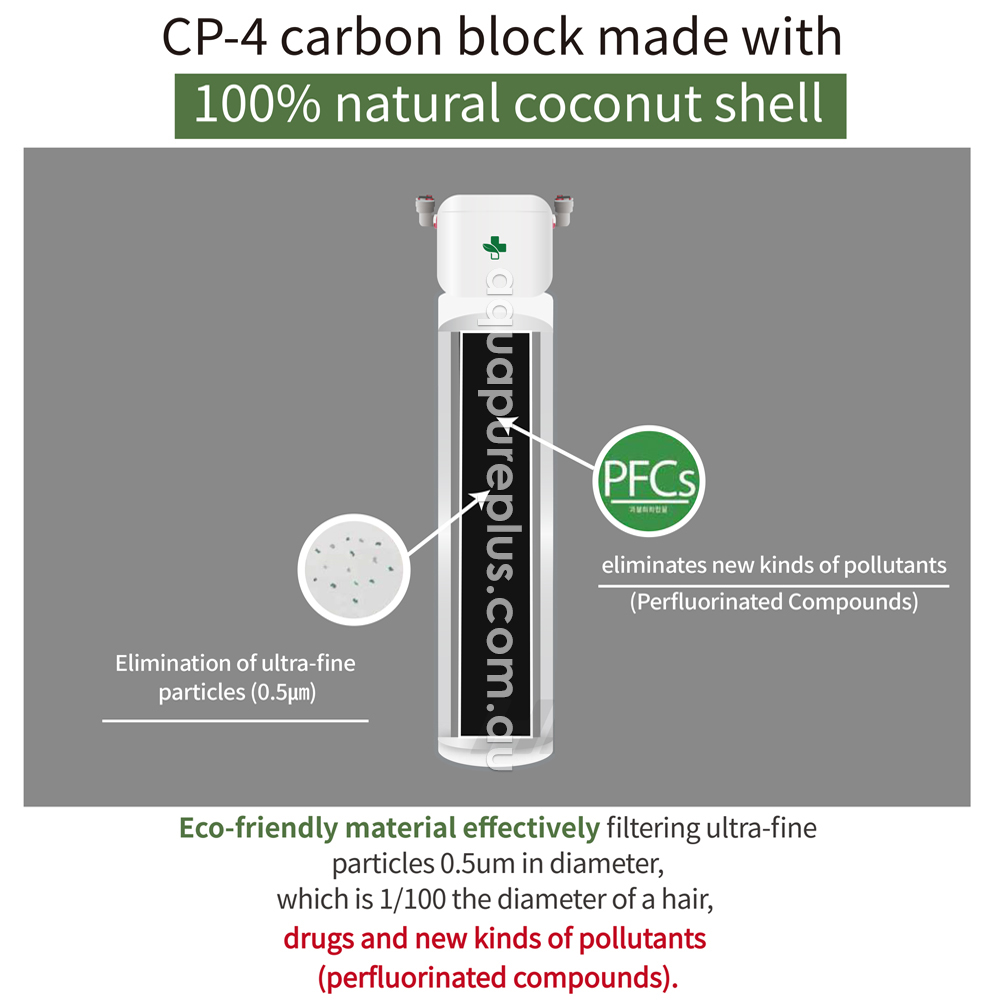


Certifications
NSF/ANSI 42, NSF/ANSI 53, NSF/ANSI P473, NSF/ANSI 401, NSF/ANSI 372

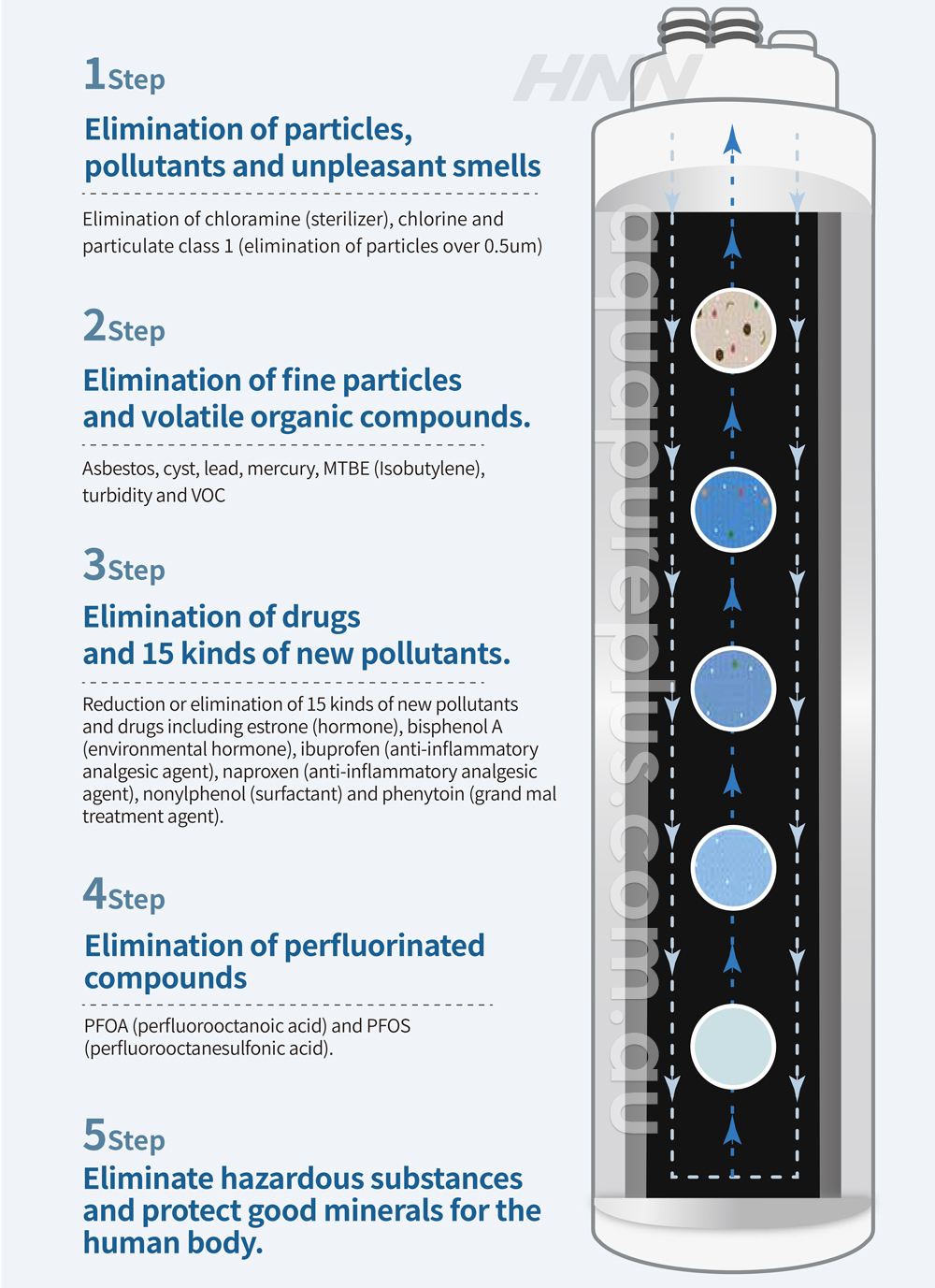
NSF/ANSI 42
Product: Drinking Water Treatment Unit - Aesthetic Effects
Model Number |
Flow Rate (GPM) |
Capacity (Gallons) |
Replacement Component |
Reduction Claims |
UCSTH4-CP (1) |
1.25 |
651 |
CP-4 |
Chloramine, Chlorine,Particulate Class I |
(1)Product also evaluated and determined to possess weighted average lead content of ≤ 0.25% and complies with lead content requirements for "lead free" plumbing as defined by California, Vermont, Maryland, and Louisiana state laws and the U.S. Safe Drinking Water Act.
NSF/ANSI 53
Product: Water Treatment Product – Health Effects
Model Number |
Flow Rate (GPM) |
Capacity (Gallons) |
Replacement Component |
Reduction Claims |
UCSTH4-CP (1) |
1.25 |
651 |
CP-4 |
Asbestos, Cyst, Lead,Mercury, MTBE,Turbidity, VOC |
(1)Product also evaluated and determined to possess weighted average lead content of ≤ 0.25% and complies with lead content requirements for "lead free" plumbing as defined by California, Vermont, Maryland, and Louisiana state laws and the U.S. Safe Drinking Water Act.
NSF/ANSI P473
Product: Drinking Water Treatment Units – PFOA & PFOS
Model Number |
Flow Rate (GPM) |
Capacity (Gallons) |
Replacement Component |
Reduction Claims |
UCSTH4-CP (1) |
1.25 |
651 |
CP-4 |
PFOA ReductionPFOS Reduction |
(1)Product also evaluated and determined to possess weighted average lead content of ≤ 0.25% and complies with lead content requirements for "lead free" plumbing as defined by California, Vermont, Maryland, and Louisiana state laws and the U.S. Safe Drinking Water Act.
NSF/ANSI 401
Product: Drinking Water Treatment Units – Emerging Compounds / Incidental Contaminants
Model Number |
Flow Rate (GPM) |
Capacity (Gallons) |
Replacement Component |
Reduction Claims |
UCSTH4-CP (1) |
1.25 |
651 |
CP-4 |
Meprobamate, Atenolol,Carbamazepine, DEET, Metolachlor,Trimethoprim, Linuron,TCEP, TCPP, Bisphenol A, Estrone,Ibuprofen, Naproxen,Nonyl phenol, Phenytoin |
(1)Product also evaluated and determined to possess weighted average lead content of ≤ 0.25% and complies with lead content requirements for "lead free" plumbing as defined by California, Vermont, Maryland, and Louisiana state laws and the U.S. Safe Drinking Water Act.
NSF/ANSI 372
Product: Lead Free Water Filtration Product
Model Number |
TLH-TLCB1CP4 |
TLH-TLCB1CP4 system low lead certification. |
INSTALLATION
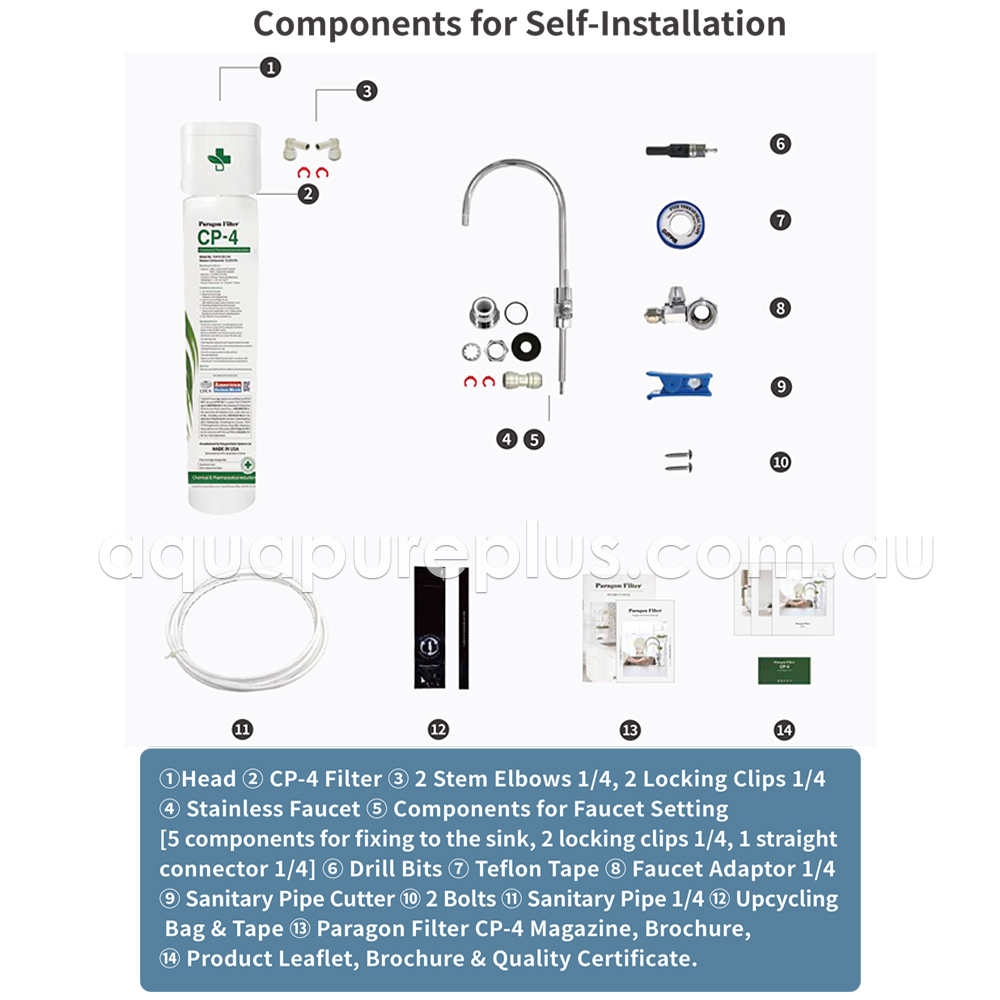

SPECIFICATIONS

REDUCES
Effectively Removes |
|||
Chloramines |
Salmonella |
Chloroform |
Manganese |
Parasites & Cysts |
Cholera |
Dibromochloromethane |
Cadium |
Cryptosporidium |
e.Coli Bacteria |
MTBE & VOC |
Copper |
Bacteria |
Residual Chlorine Content |
Zinc |
Mercury |
Sediment, Dirt, Rust |
Bromodichloromethane |
Iron & Lead |
Aluminium |
Bisphenol A |
Ibuprofen |
Meprobamate |
Nonyl phenol |
Estrone |
Napoxen |
Atenolol |
Phenytoin |
Carbamazepine |
DEET |
GUARANTEE
BEST PRICE GUARANTEE
We aim to provide you with the best price available in Australia!
If you are not 100% satisfied with your purchase we offer a full refund or replacement.
MORE INQUIRY?
-
Call Us: 1300 767 072
-
Email Us: sales@aquapureplus.com.au
Reviews



